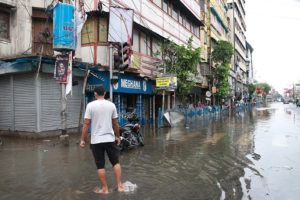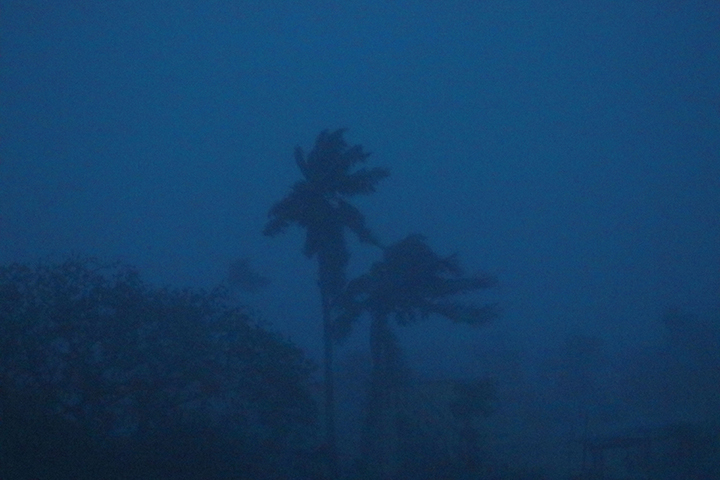As Cyclone Amphan ravaged Kolkata with wind speeds of over 130 km per hour, I was witness to the devastation it brought — from the safety of my home
During the lockdown, I thought life couldn’t get worse than this enforced idleness when warning of more bad news hit my television screen
A super cyclone named Amphan was forming in the Bay of Bengal and approaching West Bengal with reported speeds of over 200 km/hr, it was likely to hit Kolkata. When cyclone Aila had devastated the shores of the city, I was in the tenth standard, and I don’t have vivid memories of what it had wrought.
The only thing I remember is that my inter-district cricket tournament was cancelled, and I went to my training camp in Salt Lake to find all the trees uprooted, to my utter dismay.
This time, however, things were different. The Chief Minister’s warning to the citizens flashed every thirty minutes on all Bengali news channels. Anchors on TV were asking us to stay at home. We even received automated text messages from the state government asking us not to step outside on 20 May.
However, in my mind, I wondered, what harm can it do? Maybe a bit of a storm and some heavy rainfall. Having experienced the Kalbaisakhi storm every year, every person in Kolkata is accustomed to such weather conditions during this time of the year.
What happened, though, defied credulity. On the morning of 20 May, the weather was cloudy and there was a light breeze. It was pouring but the weather was quite pleasant, and I and my family thought that we had finally caught some respite from the heat. Suddenly around 12 noon, the power went off. We were not worried, as we knew that the generator at our housing society would be turned on at any moment.
Hhours rolled on but there was no sign of electricity being restored. We were informed that the municipality had asked our society to keep the generator off, for god knows what reason. Darkness slowly descended as the wind speed started to amp up.
The clock struck 5 pm, but the scenes outside made it look like it was well past midnight, such was the darkness that had enveloped the city. As I looked out from the front window I saw the trees in front of my building swaying to and fro. I could see the heads of two coconut trees at a distance waving vigorously, bowing to the gusts of wind.
The storm was still two-three hours away. By now, we were sure that there would be hell to pay once the cyclone arrived.

I was lying in my bed doing absolutely nothing. My laptop was drained out, and my phone battery was slowly starting to die. Outside, it turned pitch black. I literally couldn’t even see objects right next to me. Tired, I fell asleep.
Around 7 pm I was woken up by a knock on my window. It was the wind, blowing so fast that it felt like someone was banging on my window. The banging grew stronger, and in my living room, it felt like someone was banging hard on the front door too. Through cracks in the window, the wind was gushing through, whistling as it came. It sounded like a woman was wailing in the distance.
Yes, it felt like a scene straight out of a horror movie. Even I, who usually remains calm even in the toughest of situations, was extremely frightened at what seemed to be apocalypse now. Amidst all this, it was raining heavily, with heavy rumbles of thunder. It seemed the world would end that very evening. The wind was so strong, that the solar street lamp in front of my house — the only source of light at this point of time — was swaying so heavily that it looked like it would be uprooted. Mind you, this was a pole made of solid metal.
I somehow managed to gather the strength to open my window. In came a whoosh of wind so strong that it almost blew me away. This nightmarish situation lasted more than two hours. Around 9 pm, the winds slowly started to subside and around 11 pm, the lights came back on.
Outside, I could see the destruction the cyclone had caused. Our whole society was flooded with broken branches and leaves floating in rainwater. Two trees inside our compound had been uprooted. There was even news of two stray dogs being crushed under one of the trees. All the plants growing on our balcony had been blown away by the wind.
Later, we came to know that the wind speed was around 130 km/hr as Amphan crossed Kolkata. Around 5,000 trees had been uprooted across the city, and 88 people lost their lives in the devastating cyclone. Having seen first hand the ferociousness of the storm, I knew that I was lucky to have a roof over my head.
In the Sunderbans and the coastal areas, thousands are now homeless due to the devastation caused by the cyclone. With the Coronavirus adding to the misery, Amphan has put countless people in a situation of helplessness and hopelessness.
(Cover: On the morning of 20 May cyclone Amphan crossed Kolkata with speed around 130 km/hr // Photo: Getty)





